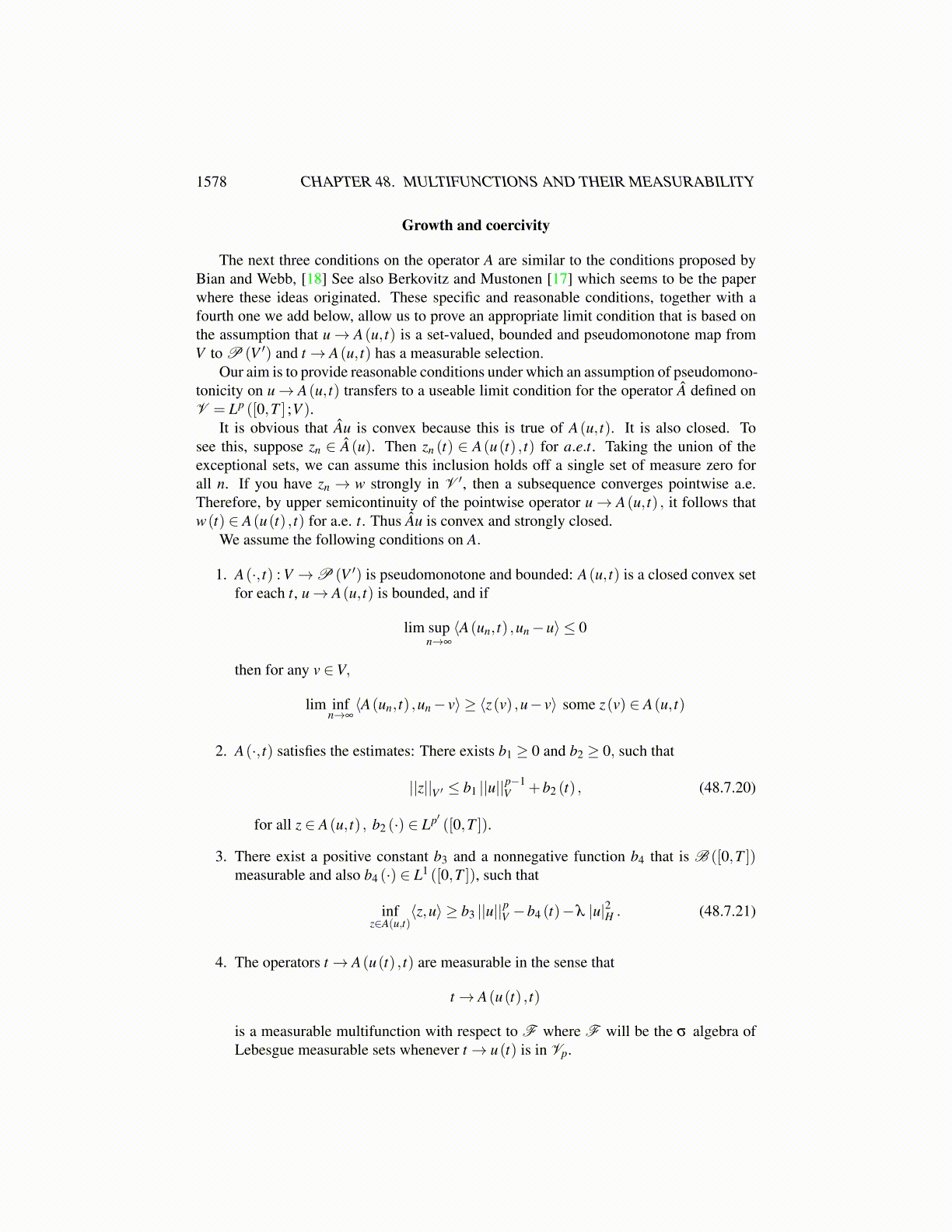
1578 CHAPTER 48. MULTIFUNCTIONS AND THEIR MEASURABILITY
48.7 Limit Conditions For Nemytskii OperatorsThis is about the following problem. You know
u→ A(u, t)
is pseudomonotone. You can also define  : V → V ′ by
Â(u)(t)≡ A(u(t) , t) a.e.
Then when can you obtain a useable limit condition for Â? I think the earliest solution tothis problem was given in [17]. These ideas were extended to set valued maps in [18] andto another situation in [85].
Define V ≡ V p byV = Lp ([0,T ] ;V ) , p > 1,
where V is a separable Banach space and H is a Hilbert space such that
V ⊆ H = H ′ ⊆V ′
with each space dense in the following one. The measure space is chosen to be
([0,T ] ,B ([0,T ]) ,m)
where m is the Lebesgue measure and B ([0,T ]) consists of all the Borel sets, although onecould use the σ algebra of Lebesgue measurable sets as well. We denote by Vp or V theabove space. If U is a Banach space, Ur will denote Lr ([0,T ] ,U).
We will assume the following measurability condition. For each u ∈ V ,
t→ A(u(t) , t) is a measurable multifunction (48.7.19)
In the case when A(·, t) is single-valued, bounded and pseudomonotone, this measura-bility condition is satisfied and so it is measurable. Thus, this definition is a generalizationof what would be expected for single-valued operators. We use the following lemma.
Lemma 48.7.1 Let U be a separable reflexive Banach space. Suppose there is a sequence{u j (ω)
}∞
j=1 in U, where each ω → u j (ω) is measurable and for each ω, supi ∥ui (ω)∥<∞. Then, there exists u(ω) ∈U such that ω → u(ω) is measurable, and a subsequencen(ω), that depends on ω , such that the weak limit
limn(ω)→∞
un(ω) (ω) = u(ω)
holds.
Proof. Let {zi}∞
i=1 be a countable dense subset of U ′. Let h : U →∏∞i=1R be defined
by
h(u) =∞
∏i=1⟨zi,u⟩ .